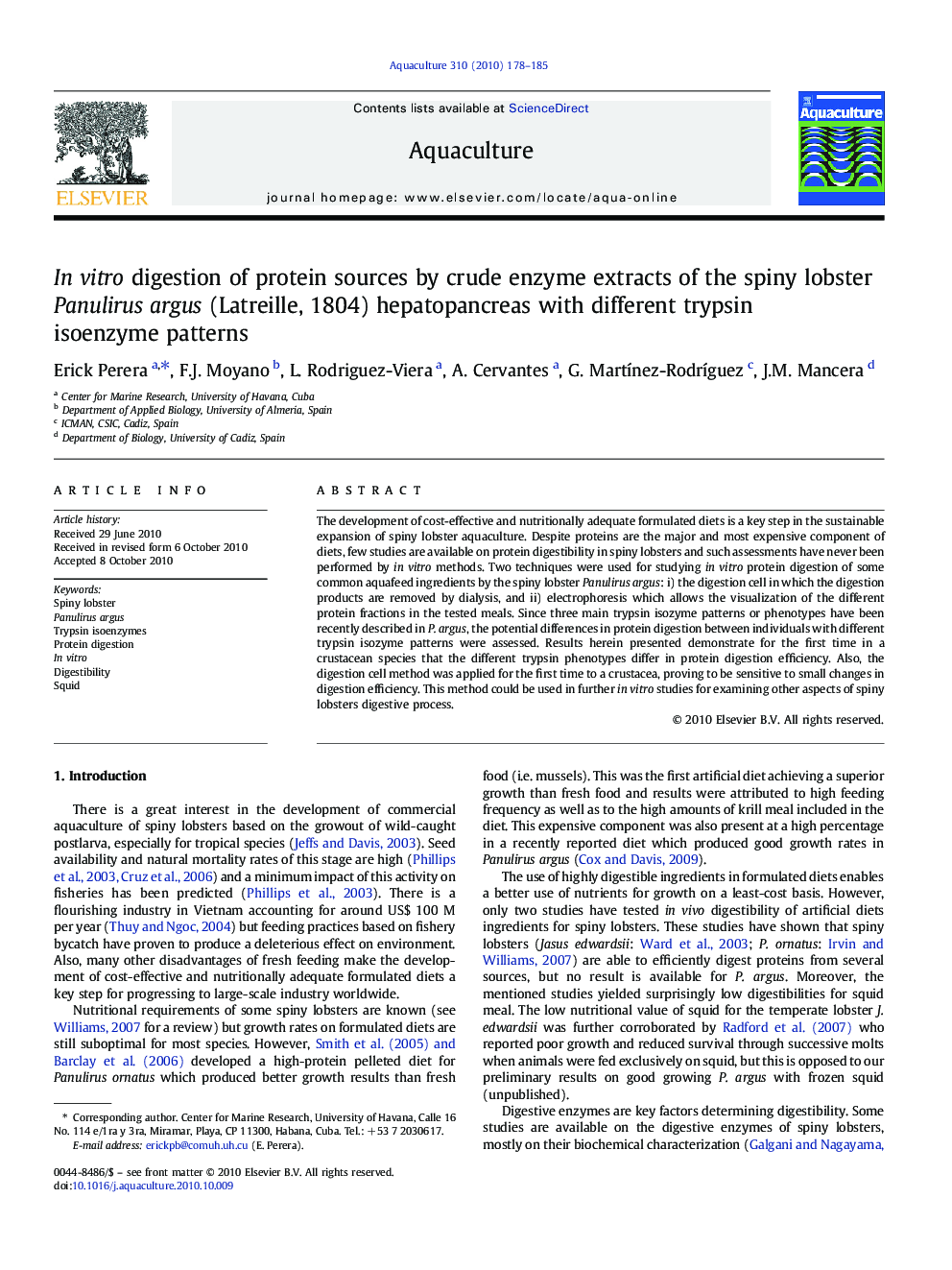| Article ID | Journal | Published Year | Pages | File Type |
|---|---|---|---|---|
| 2423431 | Aquaculture | 2010 | 8 Pages |
The development of cost-effective and nutritionally adequate formulated diets is a key step in the sustainable expansion of spiny lobster aquaculture. Despite proteins are the major and most expensive component of diets, few studies are available on protein digestibility in spiny lobsters and such assessments have never been performed by in vitro methods. Two techniques were used for studying in vitro protein digestion of some common aquafeed ingredients by the spiny lobster Panulirus argus: i) the digestion cell in which the digestion products are removed by dialysis, and ii) electrophoresis which allows the visualization of the different protein fractions in the tested meals. Since three main trypsin isozyme patterns or phenotypes have been recently described in P. argus, the potential differences in protein digestion between individuals with different trypsin isozyme patterns were assessed. Results herein presented demonstrate for the first time in a crustacean species that the different trypsin phenotypes differ in protein digestion efficiency. Also, the digestion cell method was applied for the first time to a crustacea, proving to be sensitive to small changes in digestion efficiency. This method could be used in further in vitro studies for examining other aspects of spiny lobsters digestive process.
